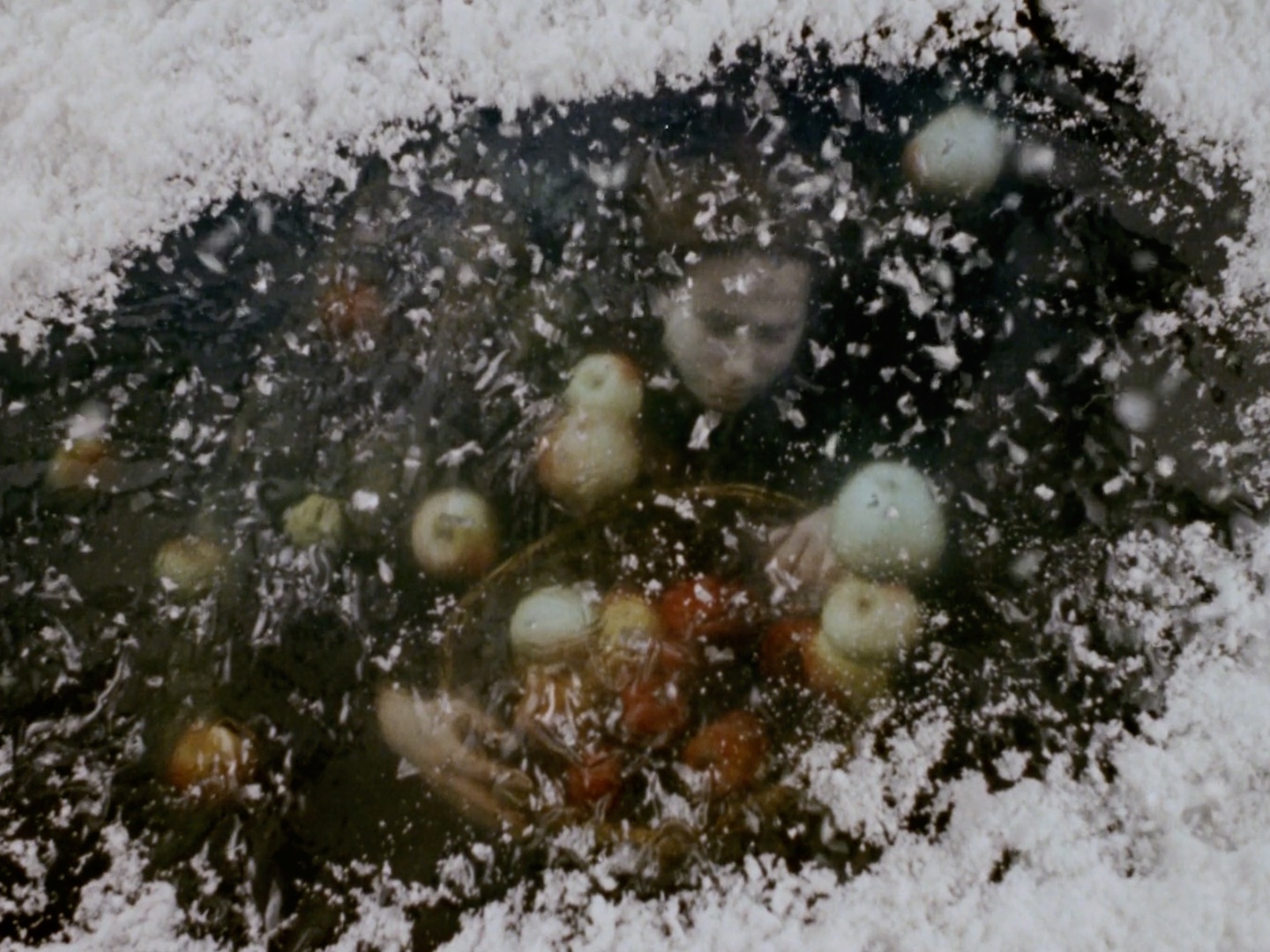
Young aristocrat Orlando begins a quest for love and freedom in the court of Elizabeth I as a man. He is granted favours and property by the queen who commands the nobleman to never change. Orlando completes the search 400 years later as a woman, shaking off their biological and cultural destiny.
EN
“As the poet Sina Queyras wrote of Virginia Woolf earlier this year: ‘If I close my eyes, I see bodies tumbling through time. I see many bright colors, textures, pleasures, sounds – it is a bacchanal of sensations, [Woolf’s] vision. And through it she stitches a firm line.’
Woolf’s source material is one-part extended love letter (to Vita Sackville-West, with whom she had an affair), and one-part satire of British culture and its patriarchal traditions of property, inheritance, empire, and marriage. In Potter’s hands, the story of Orlando indulges in a postmodern – even parodic or camp – sensibility, set to the tune of a score that she co-composed. [...]
Tia Glista: I’ve read that you always felt you could visualize the book as a film – what specific images were the most vivid for you, and did any of them make it into the final version?
Sally Potter: The apple seller frozen in the ice, with the apples suspended in the ice around her. That image stayed with me very strongly, and in the end it’s the first thing I shot when I came to shoot the film, and it was obviously very difficult to figure out how to do it, because this was before the days of CGI, so I shot it with a stunt woman in a swimming pool… I think in many ways it was that image that triggered the film. Why that image, I think, is so particular. There’s something about the apple that is sort of mythic, and of course the brutality of this working woman trapped under the ice, being laughed at as this spectacle by the men who are looking down. Because it’s just an image for them, you know. So it felt to me like there was so much going on in that image. That’s where it started.”
Tia Glista in conversation with Sally Potter1
“In the end, though, these are more novelistic structuring devices than springboards into deeper thematic inquiry. They play second fiddle to Potter’s and Woolf’s dominant double vision of gender as both an ever-malleable construction shaped by the specific historical moment, and an enduring method of social control wielded by those in power (i.e. men). The film bustles with soprano-voiced male singers, unwieldy wigs, and costumes paraded by both sexes, and a memorably commanding Queen Elizabeth I played by Quentin Crisp. A world of pageantry and primping, its members nevertheless divorce the porous boundaries between male and female social codes from the unequal levels of respect bestowed on each. Well-trodden ground, to be sure, and Potter pushes the satire into occasionally broad places. Orlando’s visit to an 18th-century intellectual salon, for example, finds such esteemed literary titans as Alexander Pope and Jonathan Swift spouting pseudo-philosophic bile about the fairer sex’s questionable morals and justified lack of independence, as the now-female Orlando sits stewing with outrage. It’s a pertinent if obvious reminder of the era’s commonplace misogyny, reaching up to the higher ranks of the intelligentsia. [...] But if Potter’s ideas are familiar, her touch is light. Orlando brims with sprightly formal flourishes, looping gracefully into the film’s intellectual project while offering winking pleasures in their own right. [...]
In place of a shot/reverse shot strategy, she attentively pans back and forth between the two as they discuss how their individual desires brush up against gendered societal norms, allowing one person to slip out of the shot to linger on the other listening, considering, readying a response. It’s a subtle visual metaphor for how Potter asserts her directorial presence within Orlando without getting in the way of Woolf’s richness and humor. Overt without being fussy, she leans in, listens close, and invites us to savor the pageant of ideas and images she alternately channels and constructs.”
Matthew Connolly2
“Well, my relationship to Virginia Woolf was one of admiration and intimacy. I think every reader has a very intimate relationship with a writer that you read again and again. You enter their world. Their world enters you. It’s a sort of private space, the reading space, and I was an avid reader as a child and teenager. I still am an avid reader. I do remember reading the book as a young teenager. I’m guessing fourteen, something like that, and being very, very affected by it – visually, emotionally. The world of ideas that she was presenting excited me, and when I later came to read her diaries and all the other things she had said about writing Orlando, and about how it was received, and all the rest of it, I was fascinated by how she described it visually as wanting to exteriorize consciousness; in other words, find images that would somehow illuminate the way the way the mind works.”
Sally Potter3
Sally Potter: After eight years, there was suddenly this quick, tense sprint of a shoot – 10 weeks!
Matthijs van Heijningen (co-producer): The entire art department had left Amsterdam for St Petersburg in trucks full of every conceivable type of equipment, right down to screws and nails. I should say that not a single nail came back.
Mark Smith in conversation with the crew4
- 1Tia Glista, “Thirty years later, Sally Potter’s ‘Orlando’ still feels wildly modern,” Document, 7 October 2022.
- 2Matthew Connolly, “Review: Orlando,” Slant Magazine, 19 July 2010.
- 3Sally Potter, cited in Tia Glista, “Thirty years later, Sally Potter’s ‘Orlando’ still feels wildly modern”, Document, 7 October 2022.
- 4Mark Smith, “Orlando, An Oral History”, The Gentlewoman 26, 2022.

